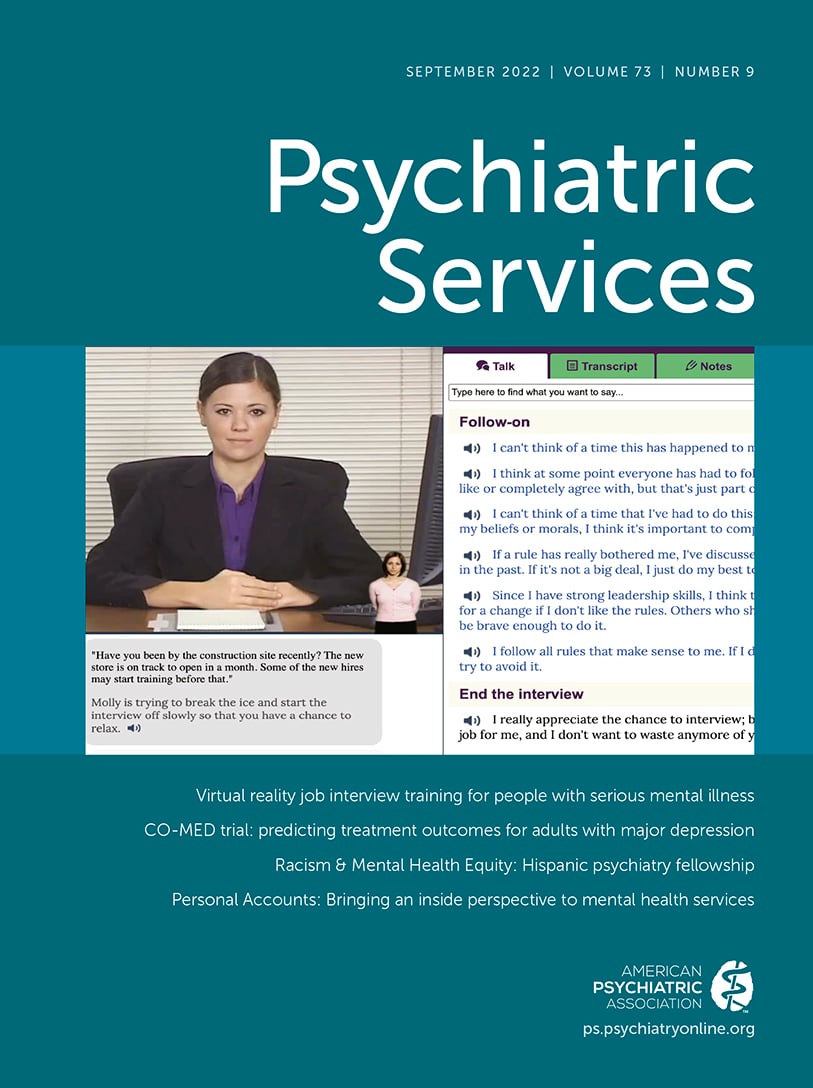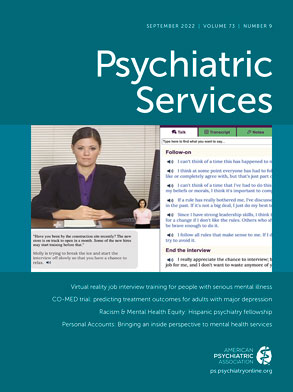I manage a small psychology team that operates across three acute psychiatric wards based in a general hospital in Bolton, England. I have worked as a psychologist for 23 years and was inspired to embark on clinical psychology training after being hospitalized for psychosis three times when I was 18. My original aim with this training was to try to promote a more curious and understanding approach to mental health within mental health services and in wider society. I felt that what was lacking in these services was an inside perspective on behavior and experiences that were deemed to be psychotic. Although I was given medication to try to slow down my thinking, I was frustrated that mental health professionals were not interested in sitting down with me to find out what it would be like to be in my shoes.
The lack of understanding I felt on the part of both mental health professionals and my family seemed to be partly caused by their belief that my problems were mainly biological. People’s wariness toward me also seemed associated with a fear and suspicion, often prevalent in our culture, toward mental confusion and distress. For example, I noticed that some of my friends were too scared to visit me during my hospitalizations. I would have liked a space to make sense of my experience together with those who treated me. But the weekly ward reviews seemed to be occasions where I was told what was wrong with me rather than an opportunity to jointly map out what was going on with my mental health.
When I was first hospitalized, I had some powerful beliefs and experiences and a lot of impulsive energy. For example, I believed that I was a burned-out apprentice spy for the British secret services. I also believed that I was under surveillance and that my former girlfriend was a spy for the Russians. I also believed that I could communicate with God via books and advertising billboards. I have always believed that these experiences had meaning, and it would have been helpful if treatment providers had been curious about what was going on with me.
I now understand that my breakdown was in part due to an identity crisis. I had failed to get into the advertising world, I had failed academically, and I had failed to sustain my first romantic relationship. The relationship breakup led me to lose out on being part of my girlfriend’s network of friends. Another significant life event was that my mother had a disabling brain hemorrhage when I was 11. Her illness and resulting disability had a significant impact on me emotionally, which I had never managed to address.
One way I have come to explain my madness was that a magical child emerged from my psyche to protect me from the loss of roles and relationships. To be immersed in a world of espionage and magical connections made me feel valued and gave me a sense of purpose. When I was told I had schizophrenia and that I would always need medication, the diagnosis acted like a reverse psychology, challenging me to prove that the diagnosis and prognosis were wrong. When a friend reached out to me during my second hospital admission and began to visit me frequently, I started to have hope in life again. My need to believe in a magical espionage world stepped into the background.
I gradually became determined to prove the professionals wrong. I had the privilege of a middle-class background and had been to a private school. Before my mother’s stroke, my family had been loving and stable place to grow up in. I came off my medication after being on it for a year, and I worked for a couple of years before returning to obtaining an education by pursuing a career in psychology. Below, I outline some of the key principles I now use in my efforts to help people struggling with mental health problems.
Sharing Decision Making With the Person and Their Support Network
Whenever possible, I try to promote shared decision making between the person and the clinicians working with them. I seek to create open democratic spaces where people can have a say in how they move forward in their lives. Use of the open dialogue approach—a systemic approach to psychosis—has shown that the creation of collaborative networks around people who have psychotic experiences can significantly improve their outcomes.
Acknowledging That Medication-Based Treatment Has Strengths and Weaknesses
All medications have pros and cons. I was coerced into taking medication for my mental health, and this coercion made me feel very resentful toward both the medication and the psychiatric professionals working with me. I think it would have been preferable for me if my psychiatrists had treated me as an equal and worked with me collaboratively in finding ways for how best to manage my experiences. Medications can help regulate emotions, so when people want to reduce their reliance on psychiatric drugs, I suggest that they have to find new ways to learn to manage their thoughts and feelings. Such management might include support groups, exercise, mindfulness practices, and different forms of creative expression.
Helping People Find Meaning
When I sit down with people, irrespective of their diagnosis I work with them to find the meaning in their experiences. This approach involves understanding links between what they think, feel, and believe and the social contexts within which these experiences have emerged. I think it is important to do so in a respectful and power-sharing way. I don’t presume that I know how best to see things or that I need to educate the person about my preferred perspective. Rather, I see such conversations as an exchange of knowledges and viewpoints.
Respect for People’s Beliefs and Experiences
During the time of my psychotic episodes, I got chest pains and became worried that I had a gadget inside my chest that could be used to kill me. This belief was very bizarre for people around me, and they seemed not to know what to say. What I would have found helpful at that time was initially for someone to validate emotionally how frightening this experience was and later suggest an alternative explanation (for example, that the pain may be caused by stress and muscle tension).
The Power of Empathy
I think we may be afraid to empathize with someone who appears paranoid or suicidal because we may be worried that we might give the impression that we are concurring with the beliefs the person holds. But empathizing with a person does not mean that we agree with his or her views. For example, I remember working with a person in an inpatient setting who reported feeing suicidal and did not want to meet with me. However, she tolerated my company when I consistently showed empathy for her situation instead of trying to change her mind. She later told me she found this approach very helpful.
Often, I might respectfully agree to disagree with people about their interpretations of events but still try to explore with them how they feel and what they want or need. For example, a person may believe that they have the devil inside who threatens them. I may empathize with the person by acknowledging that the relationship they have with an inner voice (which calls itself the devil) is a very difficult one that can fill one with self-doubt and fear. However, I also may share that I think that the devil is a voice that may be linked to trauma the person may have been through. I might suggest that, ultimately, they may need to learn how to stand up to the devil voice and build confidence in themselves. Eventually, I might also encourage them to be both assertive and compassionate toward their devil voice.
Structure and Routine
After being discharged from the hospital the second and third times, I went to a day hospital that had a lot of different activities, including pottery, art, and yoga. I found these activities helpful for developing a routine. In my work, I see a lot of people with mental health difficulties struggle because they don’t have purpose and a supportive structure to their lives.
Peers and Friendships
As mentioned above, a good friend visited me a lot when I was in the hospital, and I think the visits were what gave me new hope and a sense of belonging. Knowing firsthand how friendships I made in the hospital helped me have hope and rebuild my confidence, I have always been interested in groups and peer support networks to help people build supportive relationships. Although I do not and never have heard voices, I have learned a lot from working closely with the hearing voices networks (i.e., networks of people hearing voices self-help groups).
Compassionate Communication
Social injustice is often an important part of people’s internalized distress. For example, some people may hear voices that treat them very harshly. Or people may be very critical of themselves. These critical voices or thoughts usually arise from key experiences someone may have had when growing up when they were treated judgmentally or abusively. I teach people to learn how to compassionately communicate with themselves and, if they hear voices, apply the same compassion to the voices. This approach may involve learning to stand up for oneself and assertively letting the voices know what the person needs. It also involves helping the person learn skills to listen to the voices to find out whether there is anything they can constructively and compassionately help the voices with. I use nonviolent communication principles to teach this by using a nonjudgmental approach to communication that focuses on underlying feelings and needs in interactions that have conflicts and misunderstandings.
My work helping people make peace with their inner voices also has made me aware of the need to use those principles in my work relationships. Rather than judge colleagues who hold beliefs and values that are different from mine, I try to understand their feelings and needs better before I engage in discussions and negotiations with them.
Conclusions
In my work, I ultimately seek to promote real respect for a person who is in a mental health crisis. I like to break down the them-and-us thinking that sometimes can be strong in society’s approach to mental health. All of us can be confused and experience distress at times. So rather than holding to a dualistic idea that there are people with mental illness and people who are mentally well, I prefer to think that all of us are operating on a continuum. If we as health providers can put ourselves in the shoes of the people we are trying to support and if we can think carefully about how we would like to be treated if we were in their position, we can create environments that enable people to learn how to be gentler with themselves and each other.

